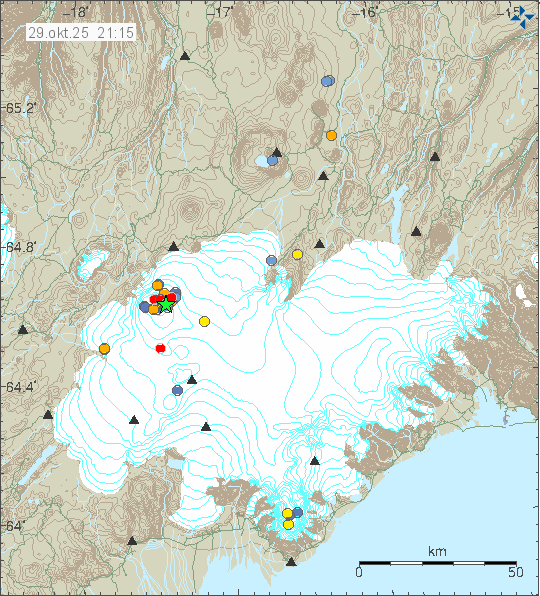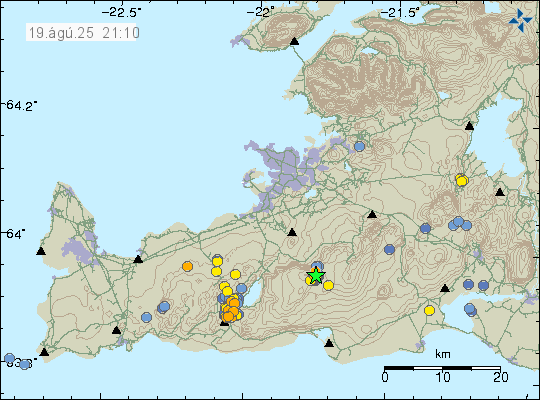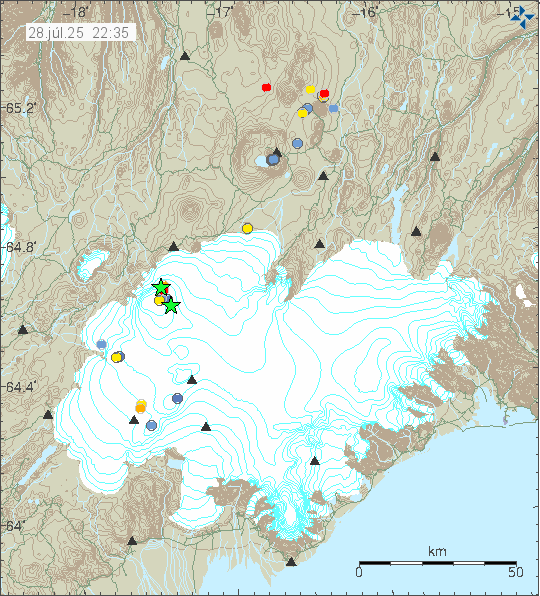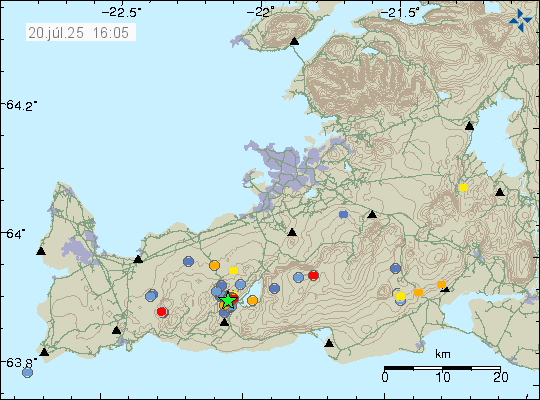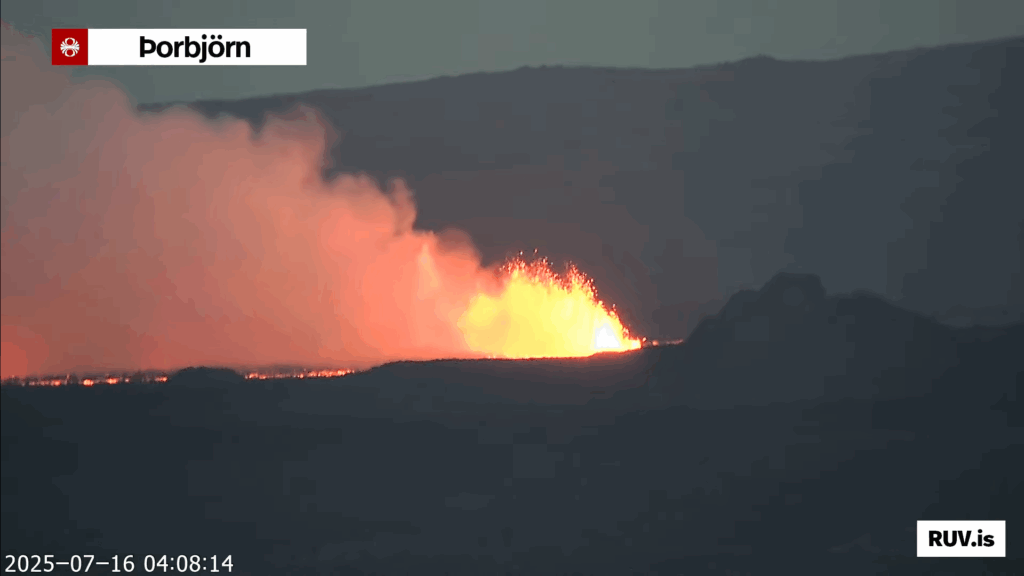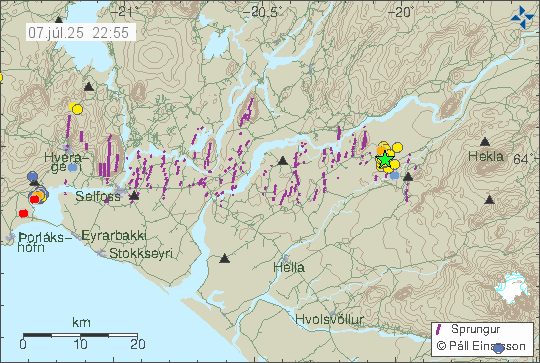A magnitude Mw3,5 earthquake took place in Askja volcano today (9-November 2025) at 09:39 UTC. This was a single earthquake with no aftershocks. It is unlikley that more earthquakes are going to happen following this earthquake.
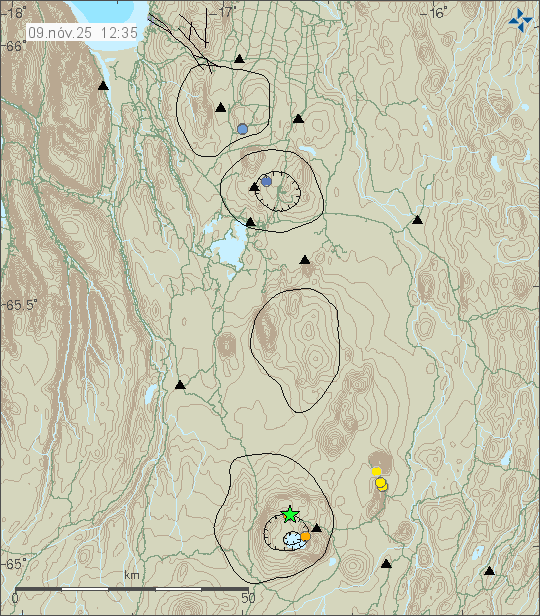
There has been some inflation in Askja volcano in recent years. It is my view that that inflation is not going to result in a eruption for the next few decades. That might change if the situation changes in Askja volcano. At the current time, that seems unlikely to happen.

